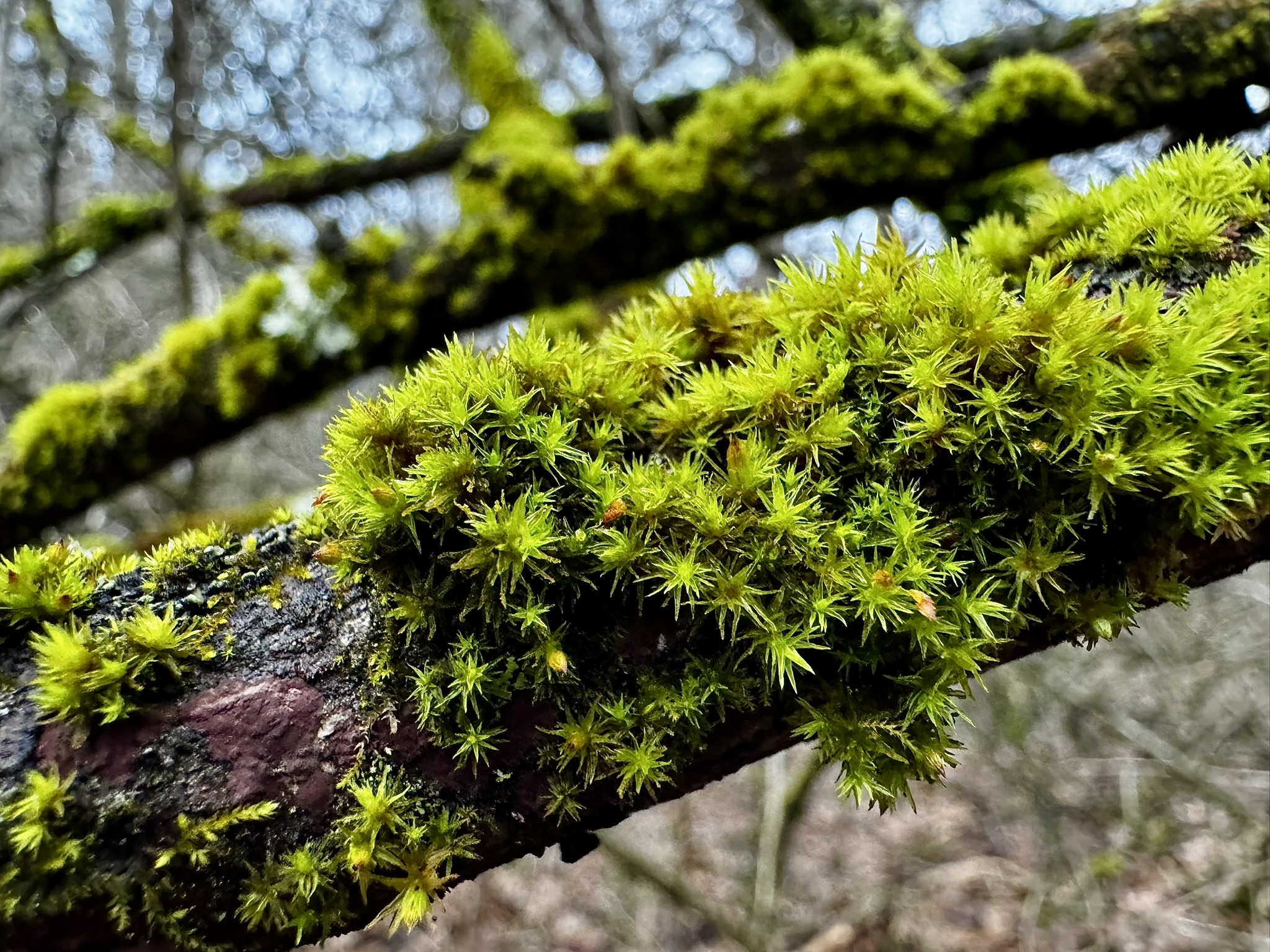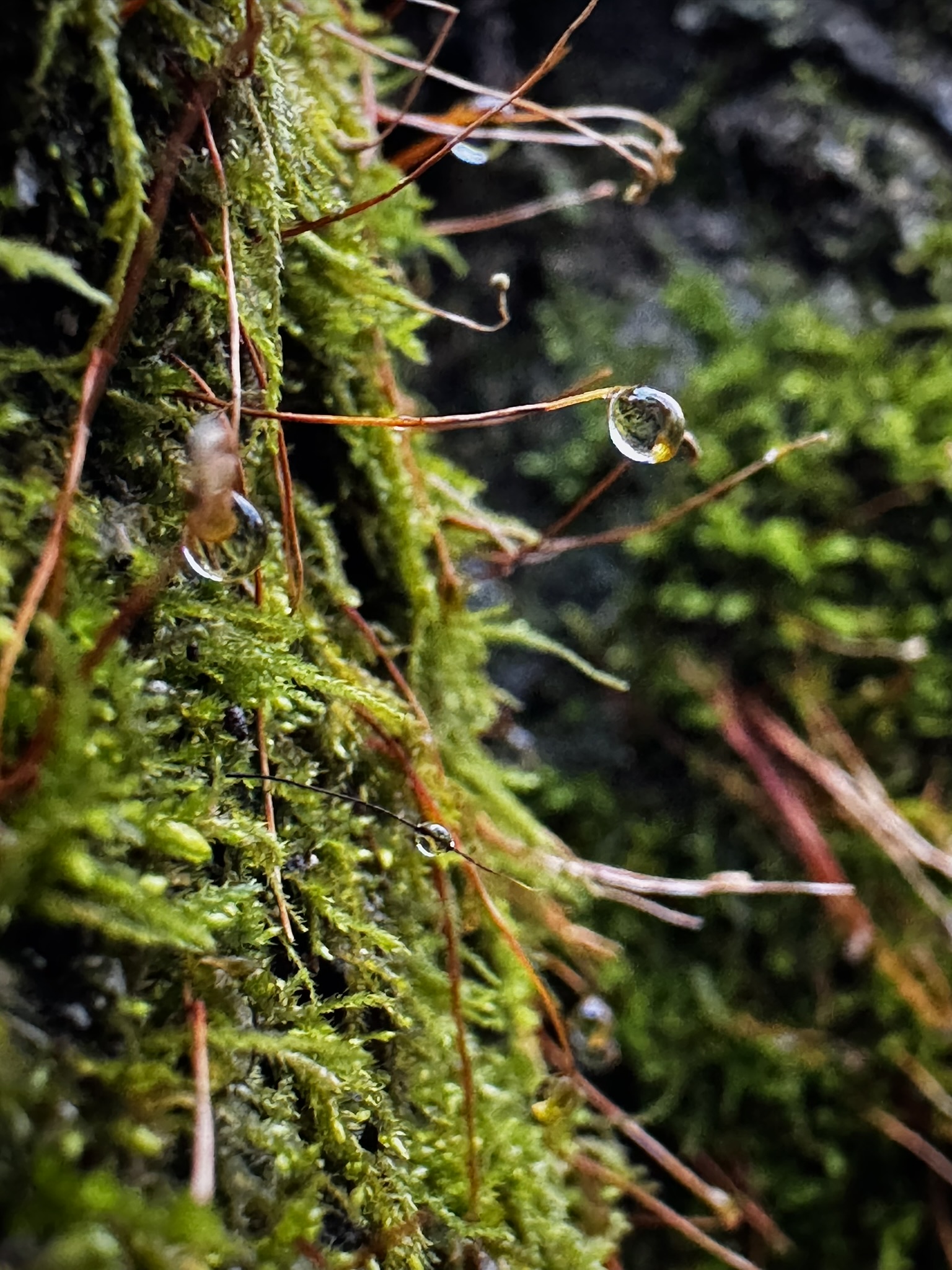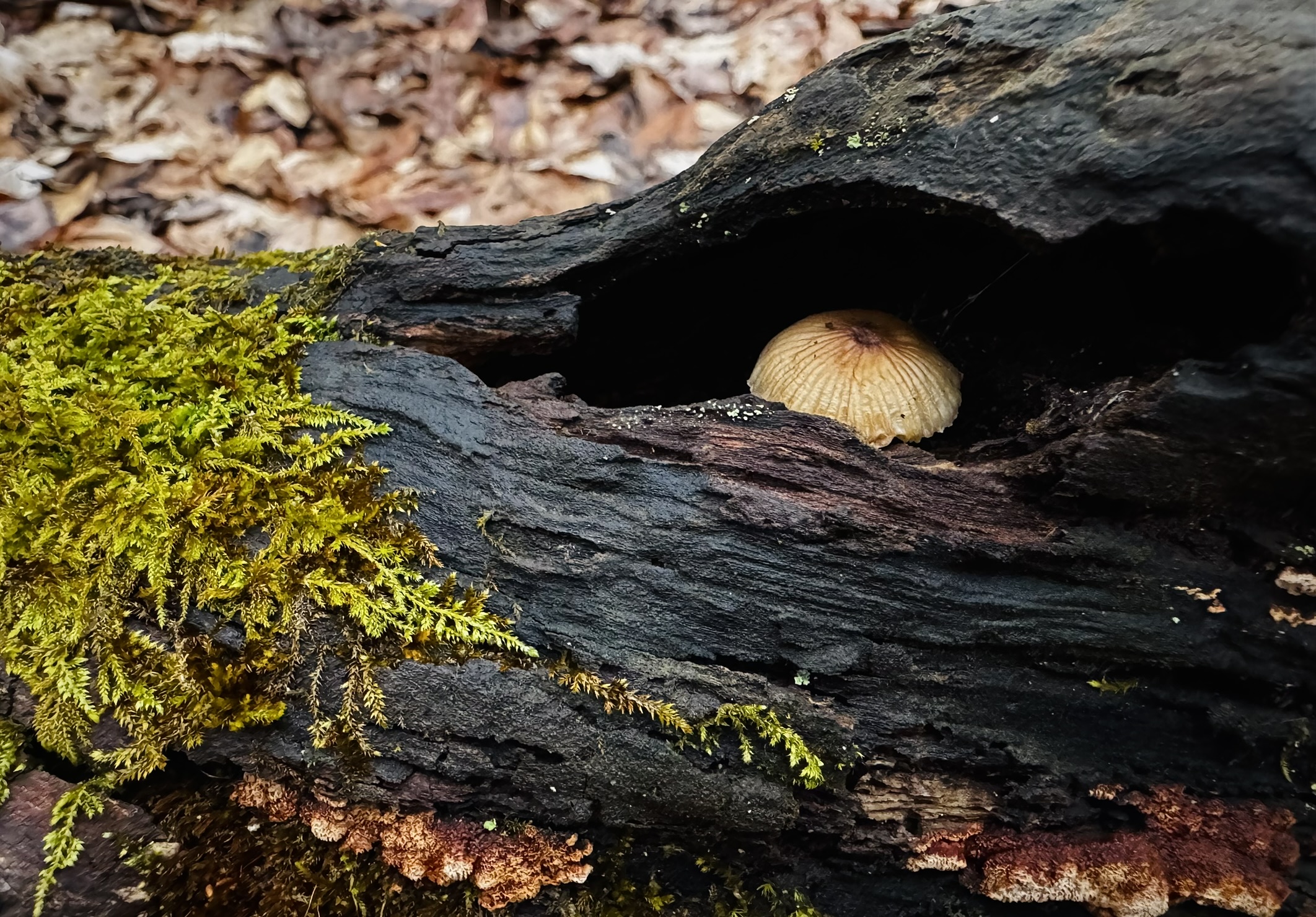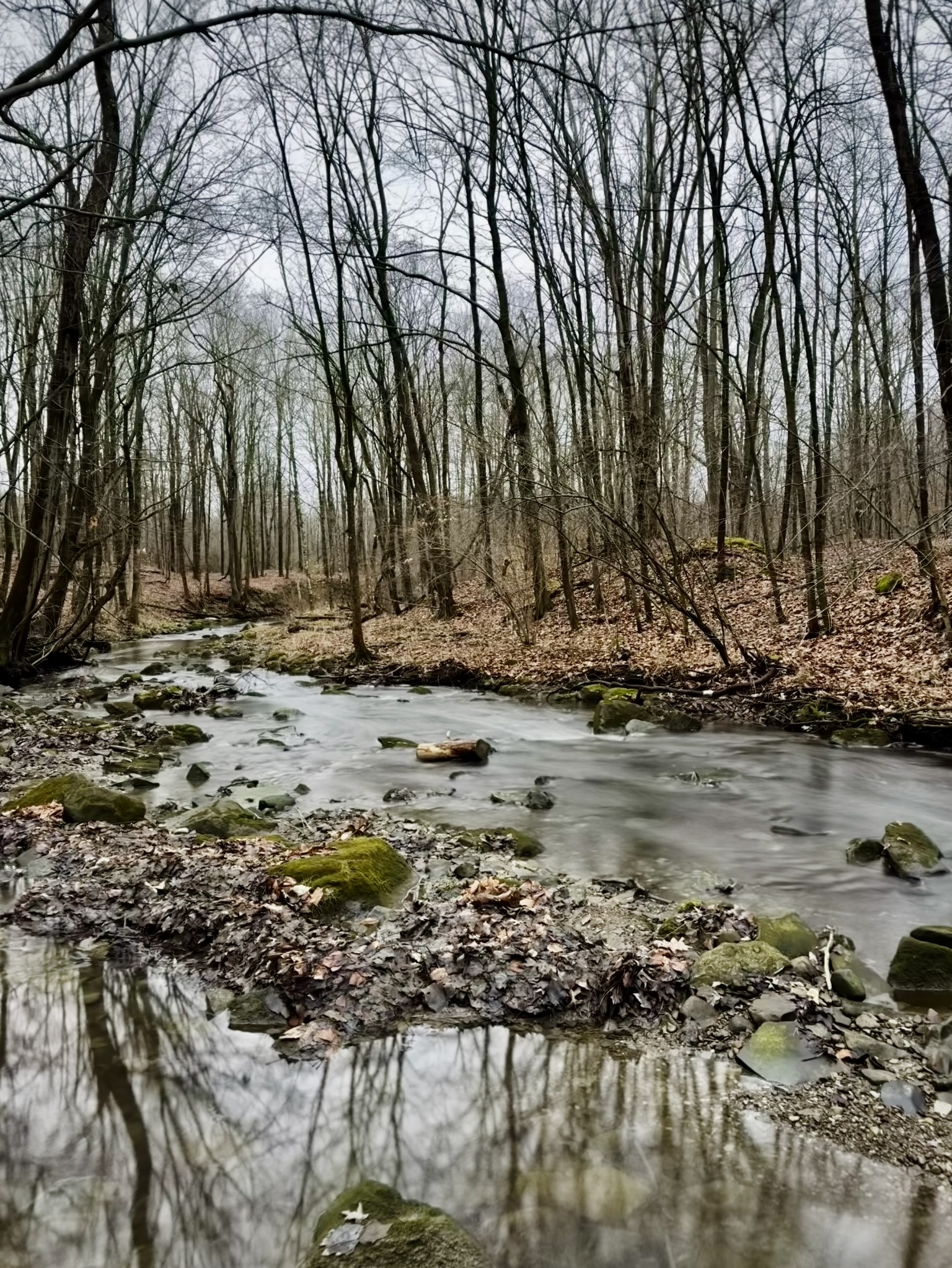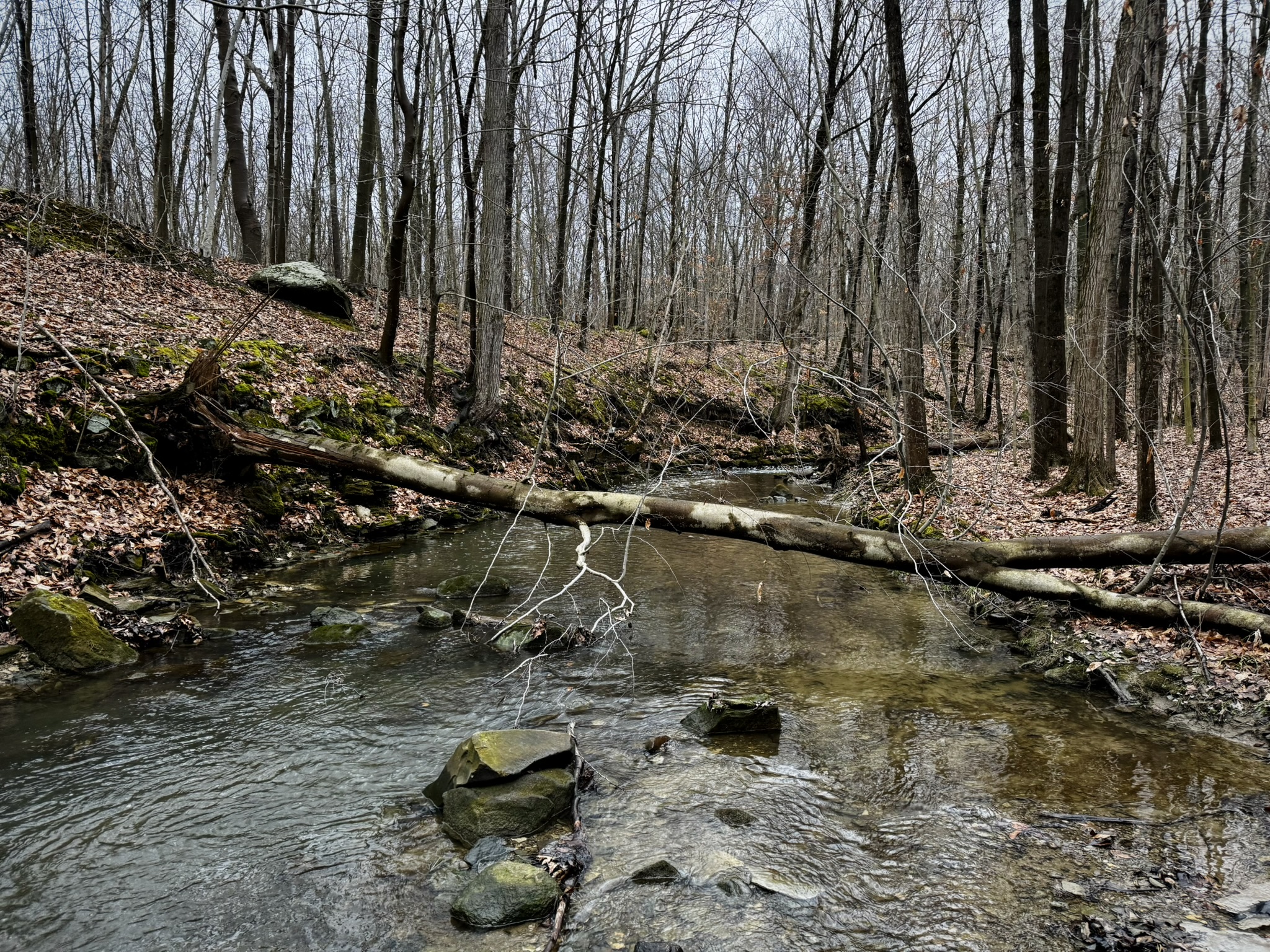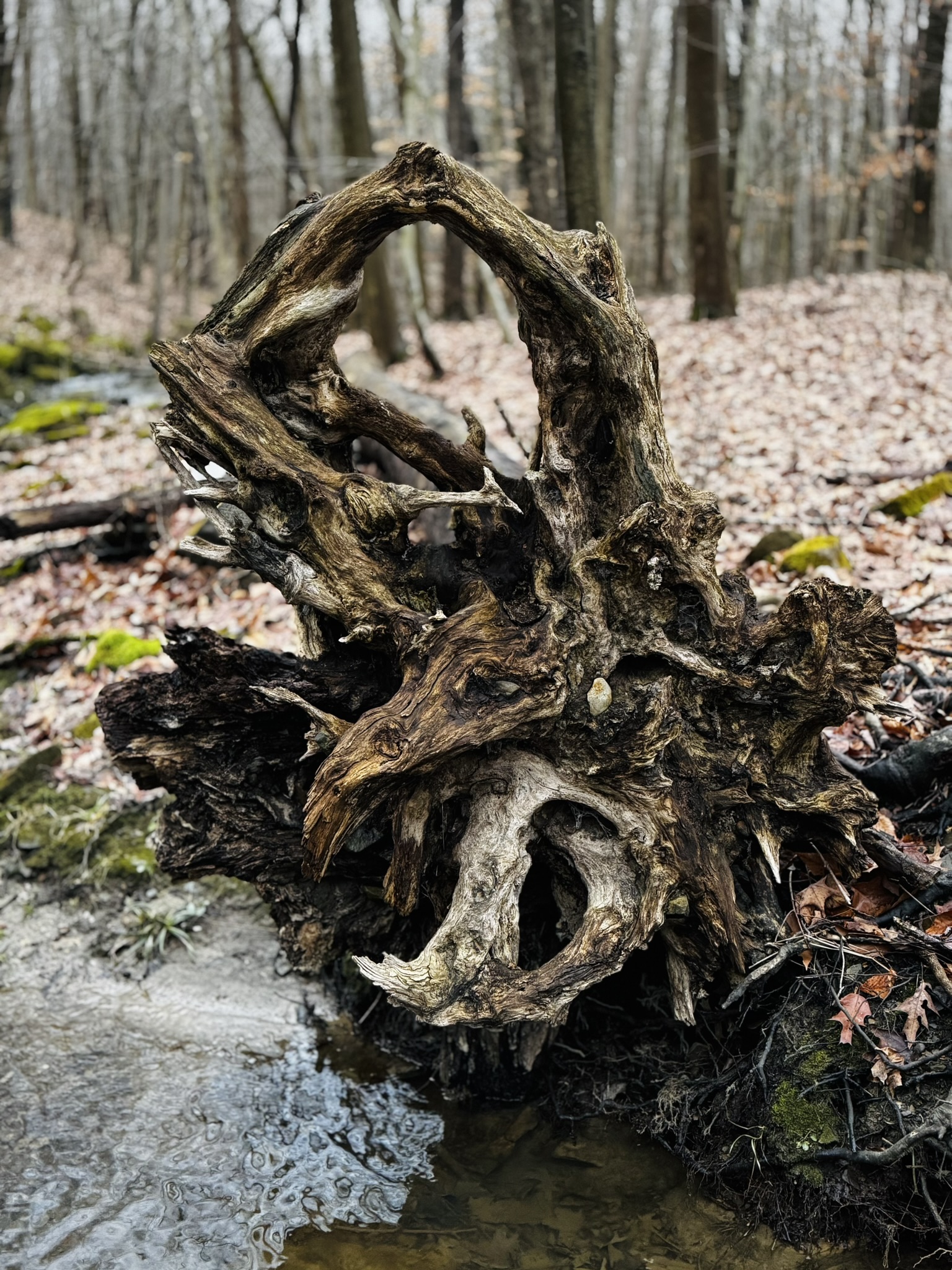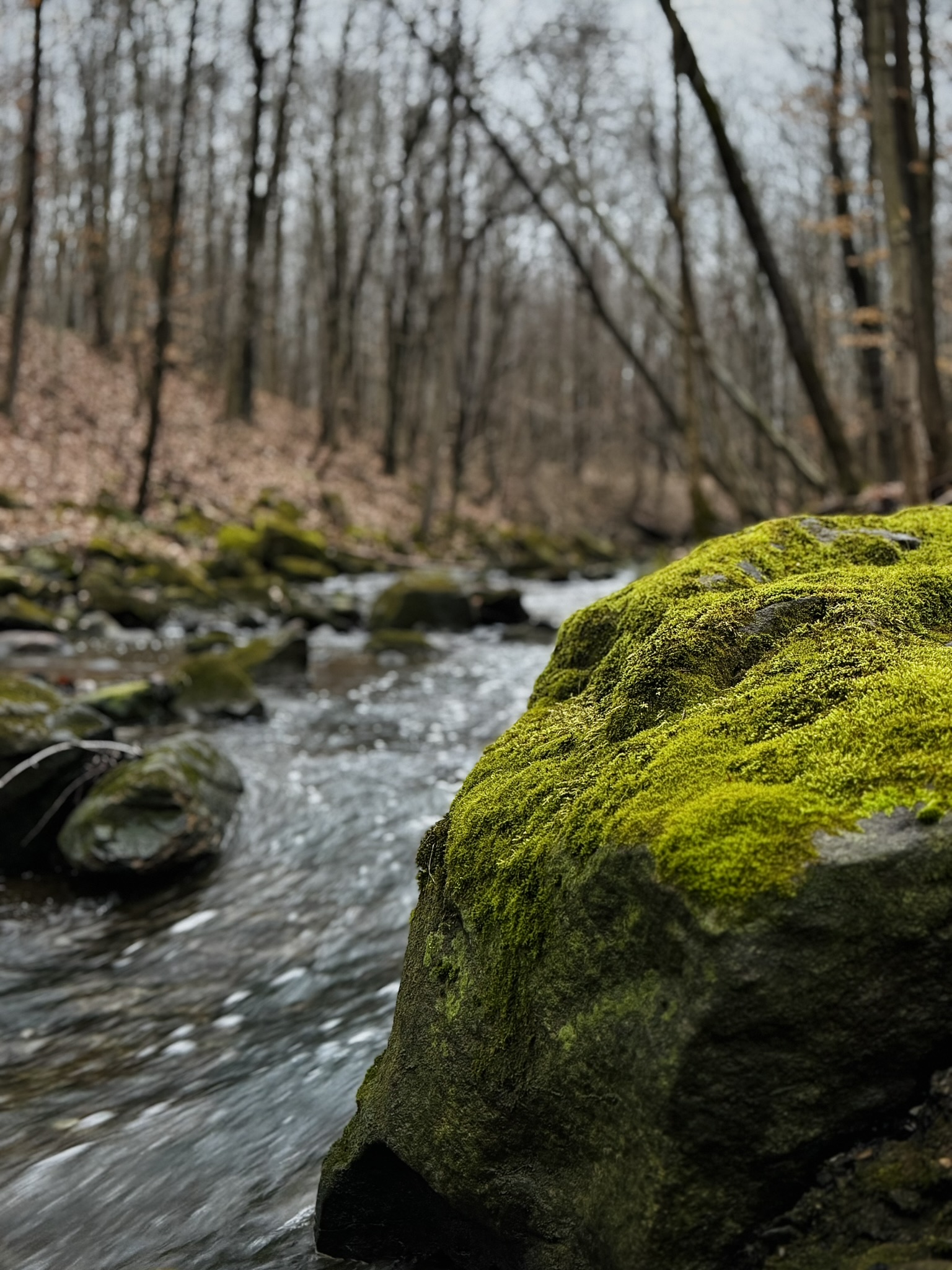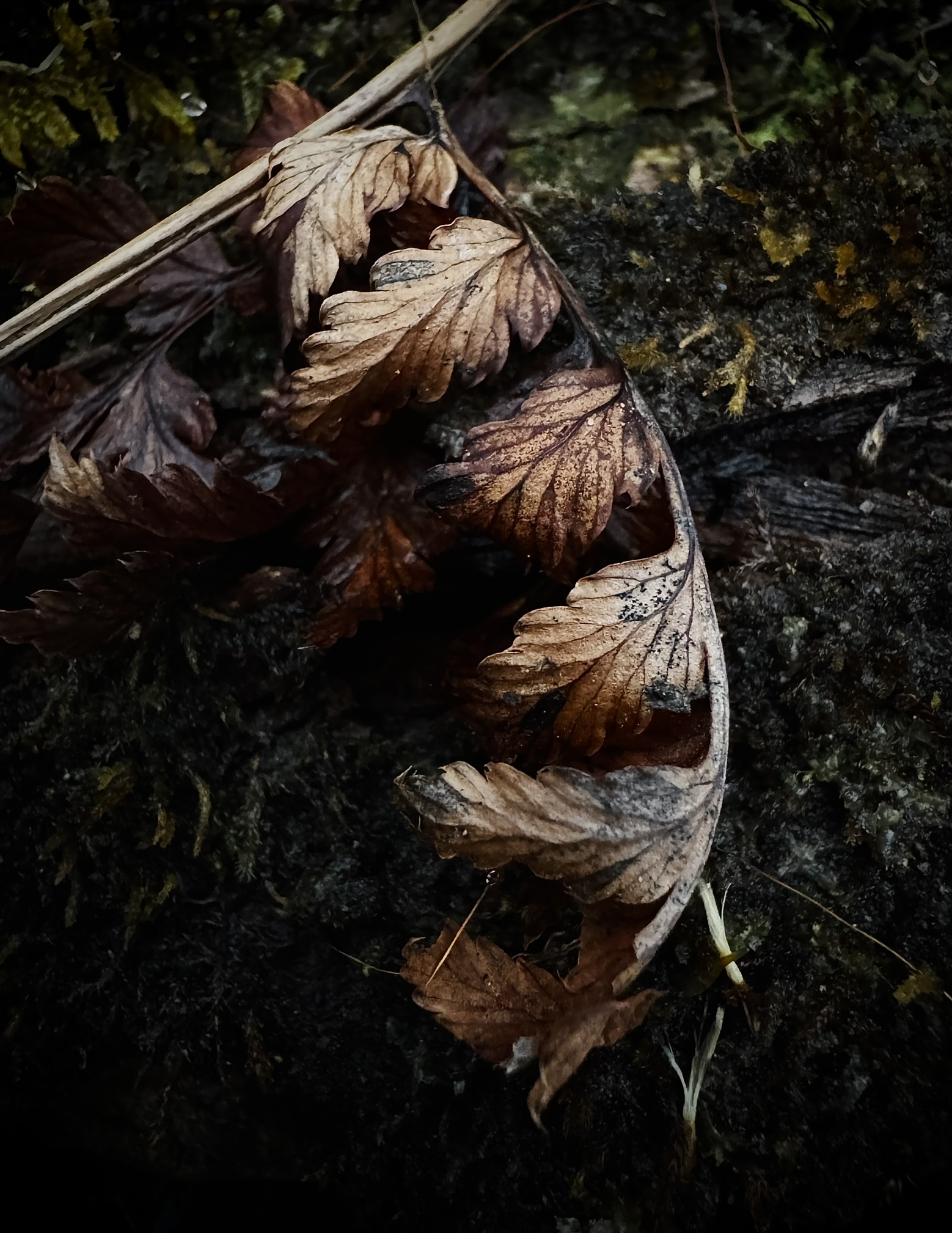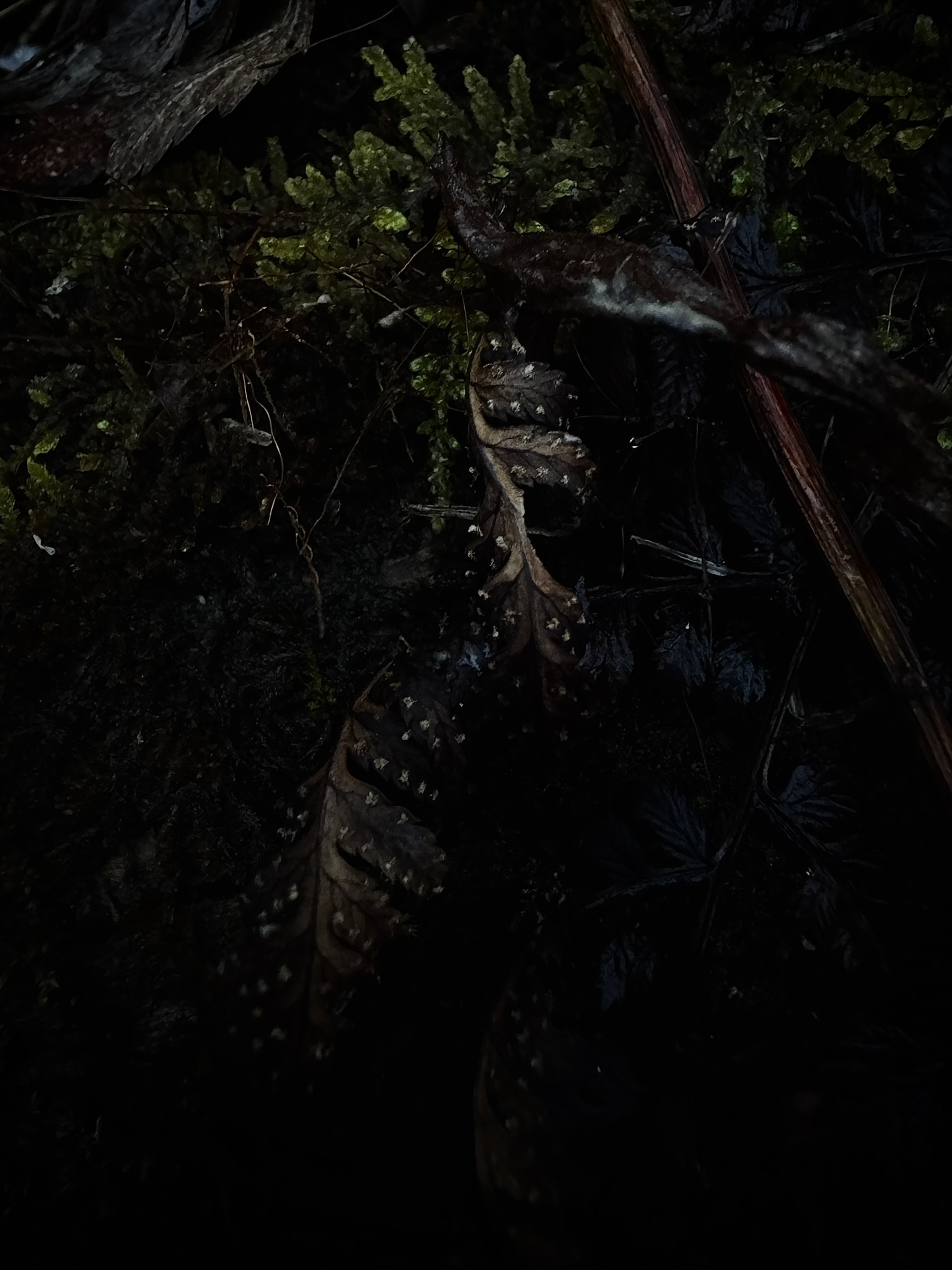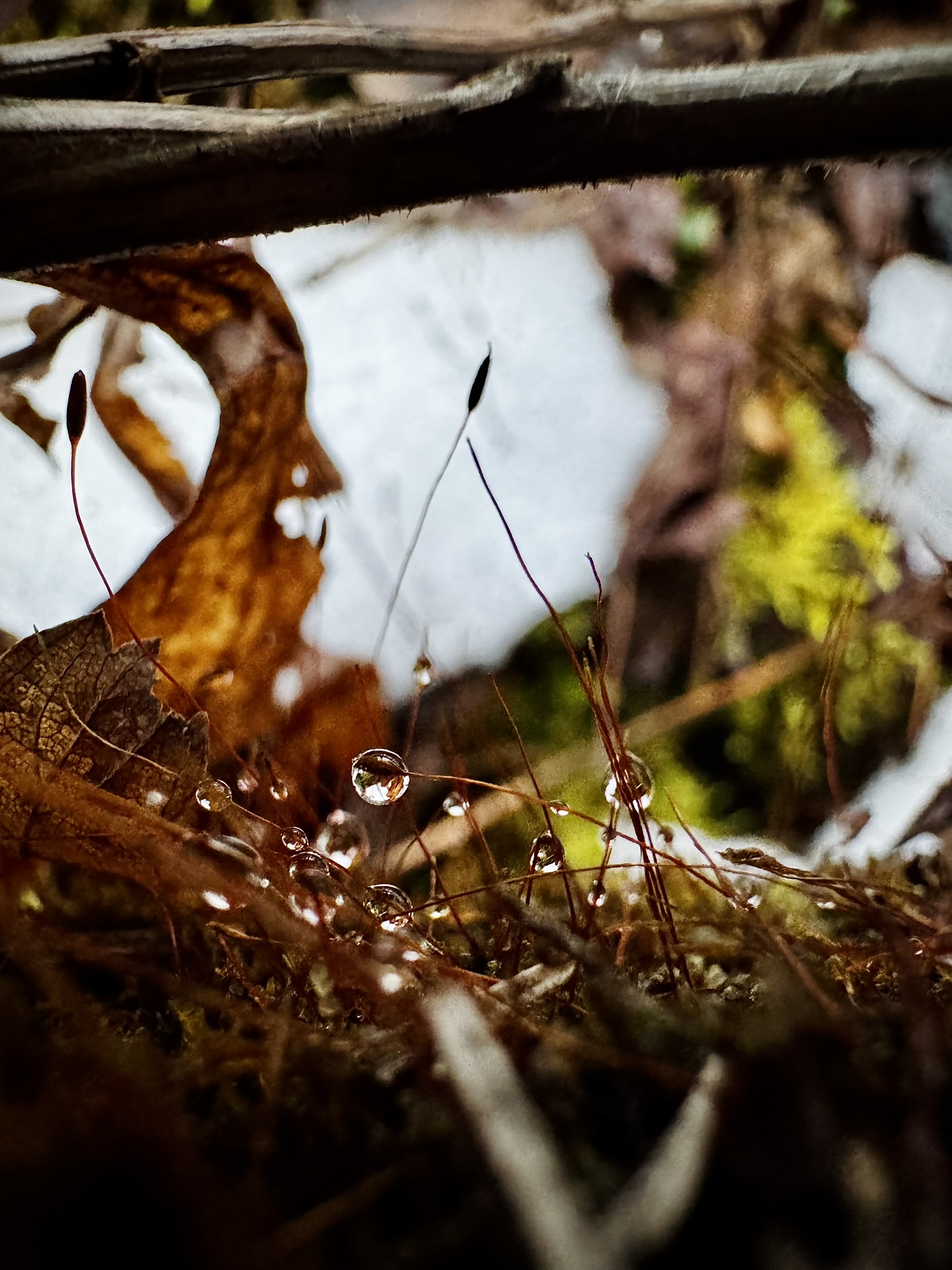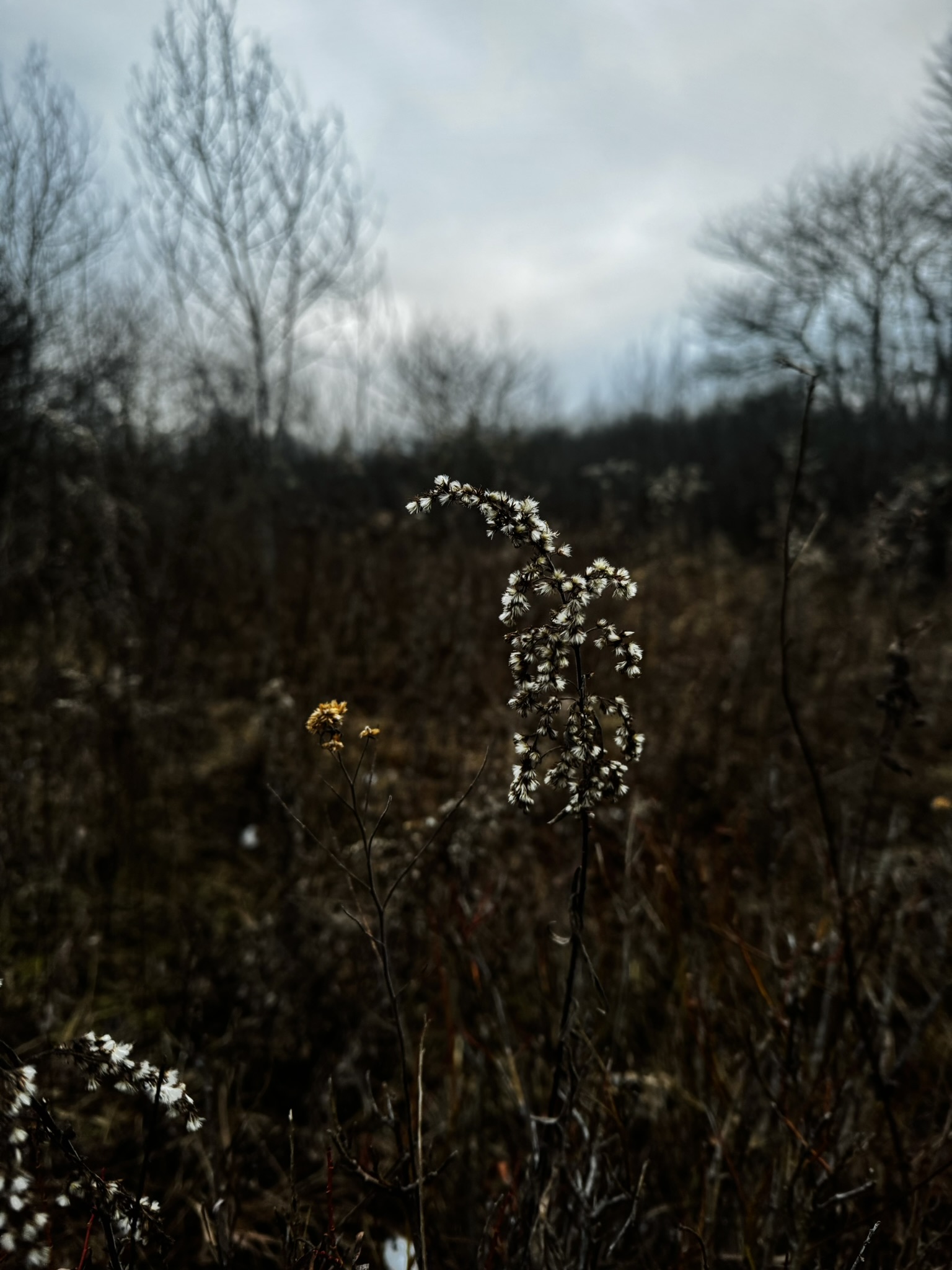Sawmill Creek, PM. This landscape is very disturbed; there are active gas wells in this nature “preserve.” The trails aren’t trails so much as they are dirt roads used to access and maintain the gas wells. Not many big trees, almost all are very young; largely maple and beech, though there are some patches with pine. The edges are thick with brambles, thorns, briars, etc.—the types of plants that grab you when you get near, very scrubby and tangled and gnarly; wiry, spindly twigs and branches and weeds and everything is overgrown and there is so much happening everywhere you look. It’s hard to look at honestly, to know where to focus, to see anything at all.
The desire to learn and know the name of every plant around me, a desire I’ve had since I was young, has always seemed impossibly daunting and overwhelming precisely because of the extravagance and abundance of this kind of environment which dominates most of the natural areas around me; it feels overwhelming and impossible to know where to begin because there is so much life—life exploding, life unchecked, life without bounds.
I feel seen as I walk back to my car, watched. It feels almost haunted, especially this time of year when the trees are bare and the skies are dark and overcast. I half expect to stumble upon some witch’s hut. I’m reminded of those stories of haunted forests and witches and I wonder… this is not how it’s meant to be, I don’t think. This is what happens when you destroy the land and then leave it—everything feels out of balance, haunted, possessed even; the same plants that will leave you bleeding if you touch them are themselves scars and scabs from some larger and more profound wounding. Honestly, fire is needed; fire would help restore some kind of balance, would be beneficial for everyone and everything, plants and animals and insects and fungi alike. It’s not that it’s not beneficial now, to set aside this land, but it doesn’t seem to be a good place for the plants and animals that call it home; this land is nutrient deficient and my stomach aches just walking through it.
I do believe that humans have a responsibility to our environments and that means managing it in such a way that it is most fruitful and beneficial for everyone and everything. Most of the time I don’t think leaving some wounded and poisoned land to heal on its own is the best course of action.
Those stories of witches and haunted forests are cautionary tales: places become haunted—like this—when I have stopped relating to my environment in a healthy, responsible way; when I’m not responsive to my environment, when I’ve given up my responsibility to it, when I’ve stopped caring for it, then it turns on me. The thorns and brambles and burrs are literally grabbing me when I walk past them, reminding me that I have a responsibility to them, that me and my kind have destroyed and abandoned them—are destroying and abandoning them. If this place is haunted it is me and my kind who have done this.
